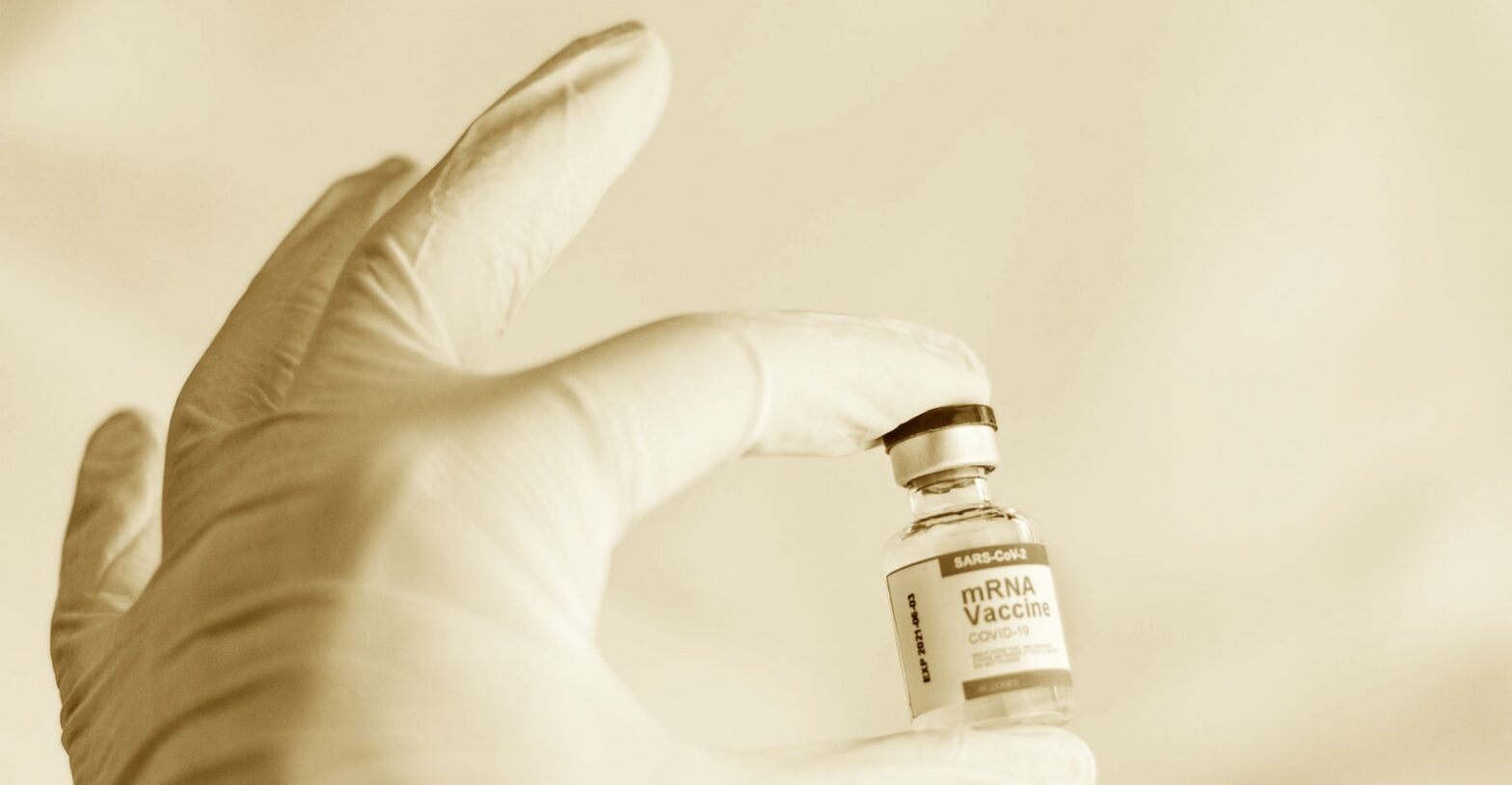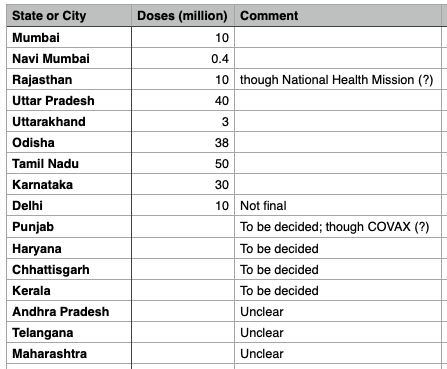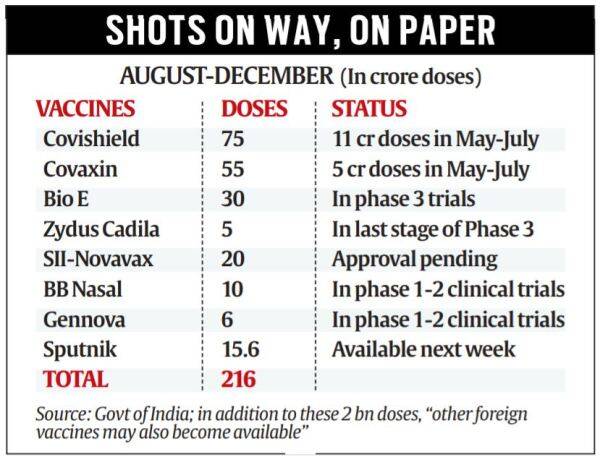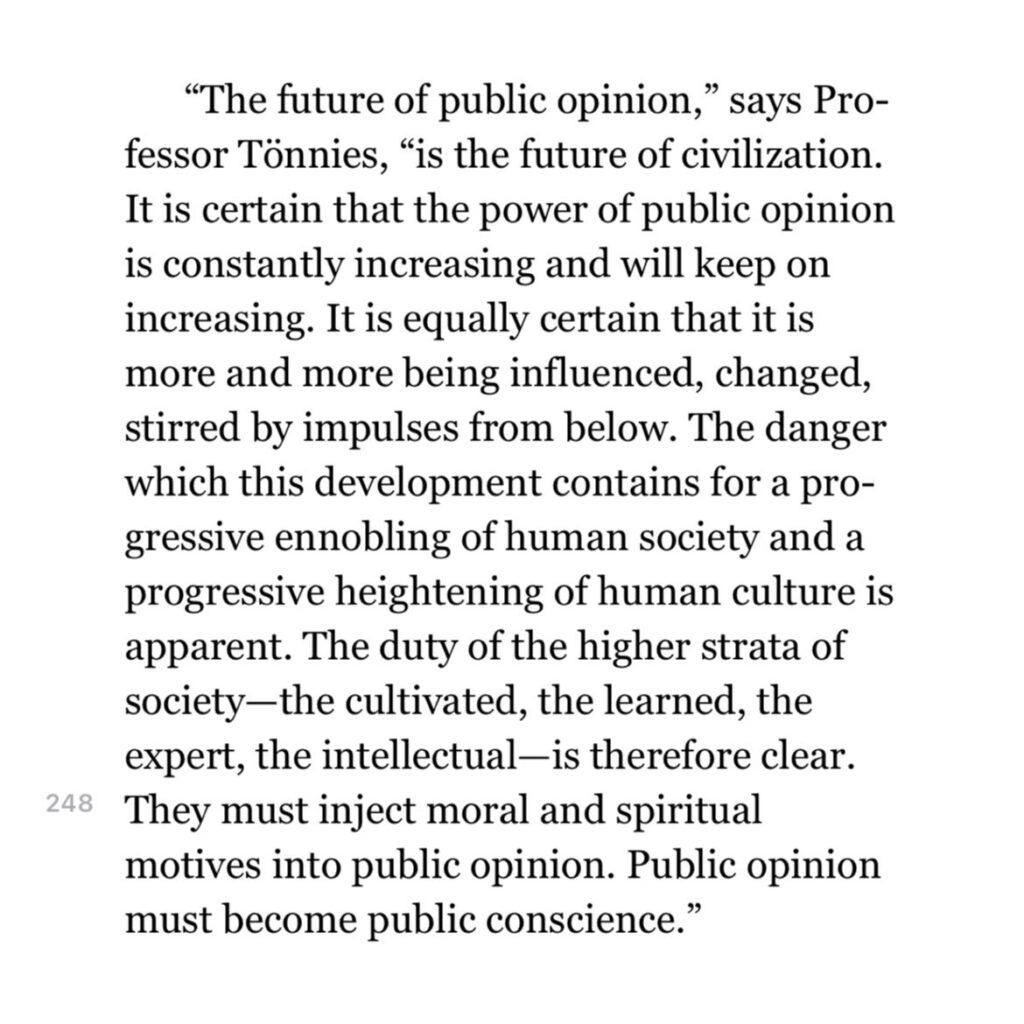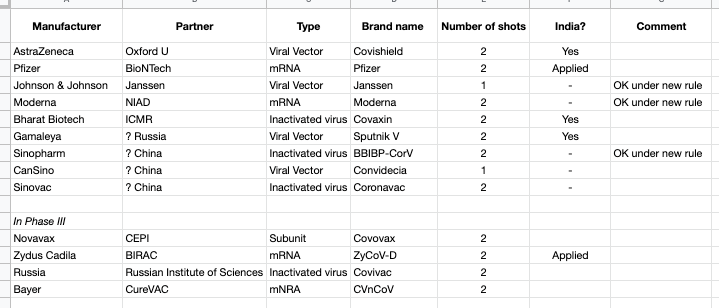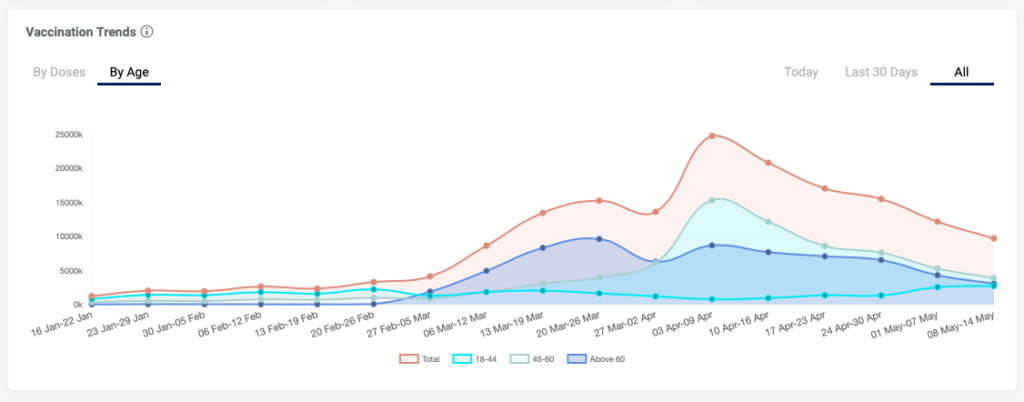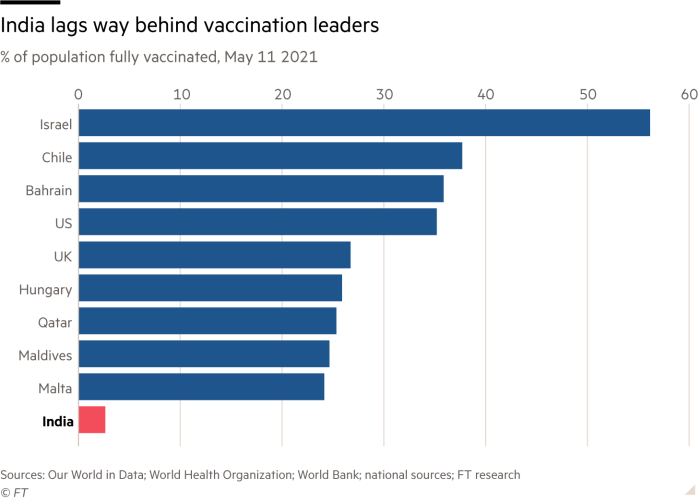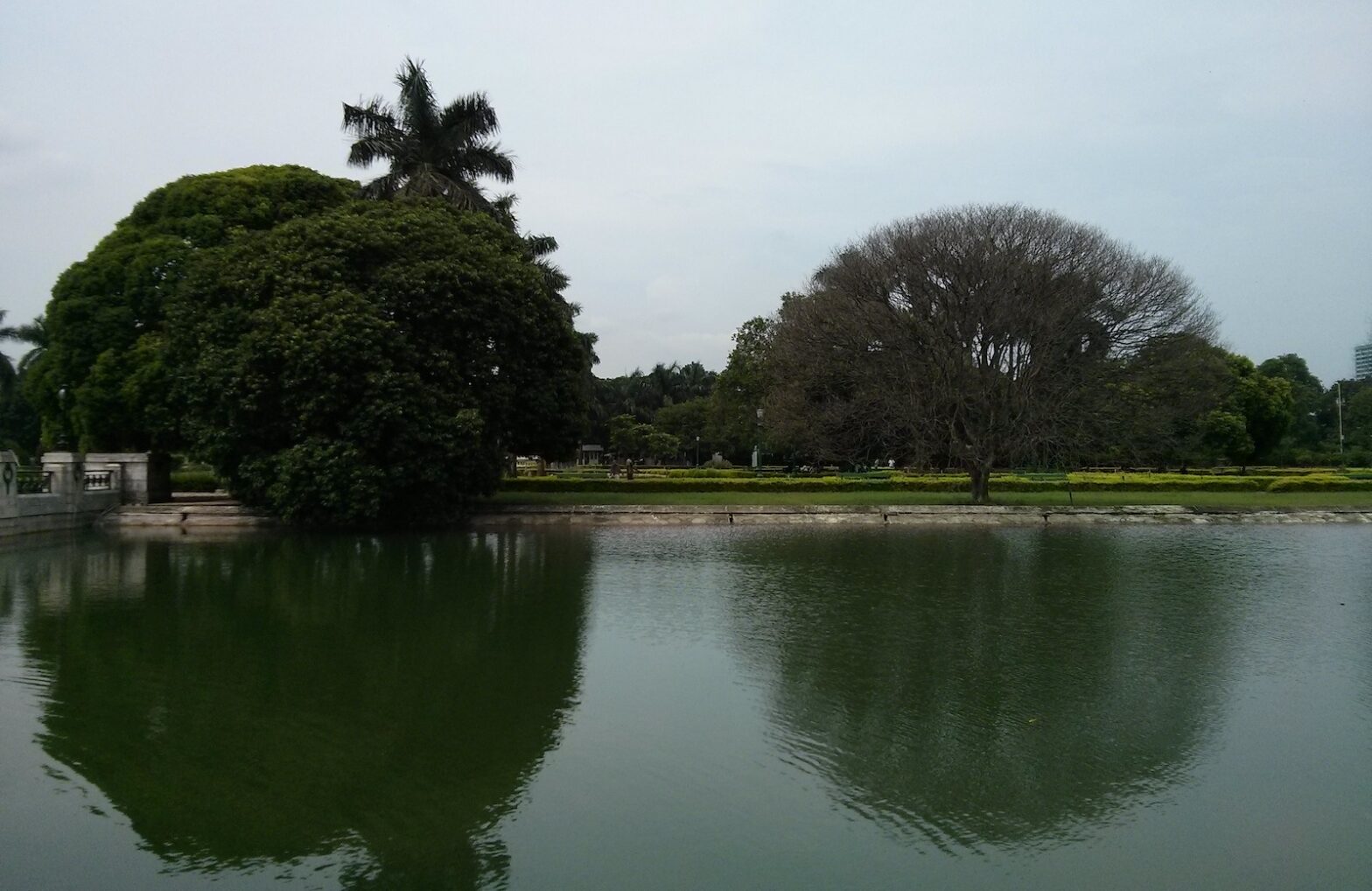(Part 2: The ‘every state and city for itself’ model of vaccination)
This is disappointing but not surprising: “Mumbai: No bidders yet for BMC vaccine tender“.
However, on the same day: “PCMC to float global tender to procure 15 lakh vaccine doses“
One of the reasons the COVAX multi-national vaccine initiative exists is because small, low-to-medium income countries lack the negotiating strength to compete individually against the developed world, especially when most vaccine developers and manufacturers are from those developed countries. It’s unrealistic to have not just states but individual bodies compete for supplies.
Another equally important aspect of this is that there is no global market for vaccines. Unlike a stock market, there is no counter-party holding on to vaccines waiting to sell them to the highest bidder.
As the two economists in the interview that we linked to in earlier post said,
The other [plan] was that we should go and bid in the global marketplace for vaccines. If that was the case, some rich trader at Goldman Sachs would have said, I’ll buy up the whole vaccine supply of the world, and you come and trade with me every day. I would have created a market for vaccines. That can’t be the case because there is no marketplace. Otherwise, some dark pool would exist for vaccines right?
The few companies with vaccine know-how plan their manufacturing based on the orders that they get from countries/groups of countries:
It is highly unlikely that in the face of an EU order for a billion plus vaccines, that Pfizer will entertain a 0.4 million order from Navi Mumbai, or a 1.5 million order from Pimpri-Chinchwad.
Ditto with Moderna, whose commitments until the end of the year “include delivering 300 million doses to the US, 150 million doses to the EU by the end of this year, 50 million doses to Japan, and roughly 50 million doses to Canada and South Korea”
Novavax, who has contracted the Serum Institute of India to manufacture its vaccine, is limited by the US’ reluctance to export enough raw materials to get production lines rolling:
Still other vaccine makers like AstraZeneca are hamstrung by capacity constraints and export bans in India. In any case, the national government has ruled it’ll purchase, at a pre-determined fixed price, half of any doses manufactured in India. That leaves less for states and municipal corporations.
Full circle – it should be no surprise that Mumbai’s municipal corporation has received no bids: vaccine supplies are not listed on a globally liquid supply-and-demand marketplace; on the contrary manufacturing itself is planned based on pre-paid advance orders; other vaccine manufacturers are facing constraints on raw materials and production. I hope states’ global tenders receive responses, but I am skeptical.

